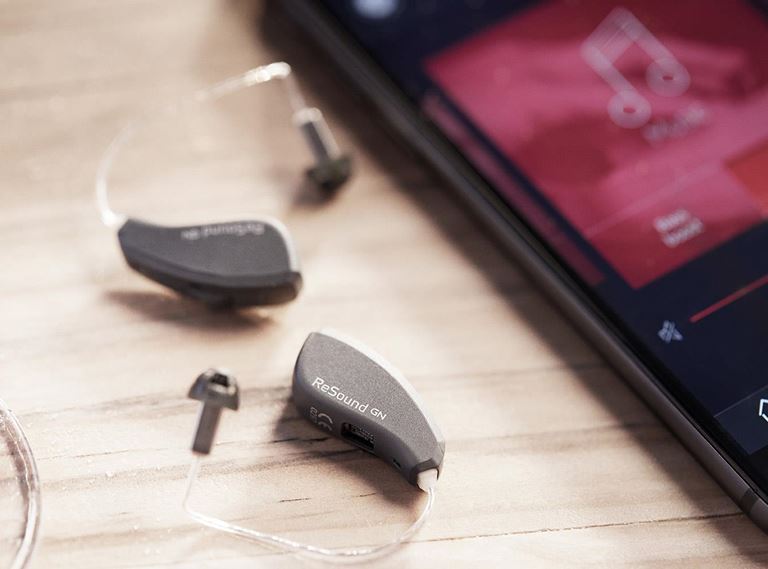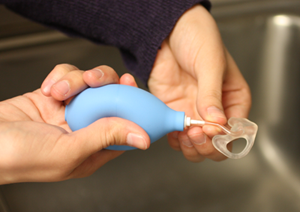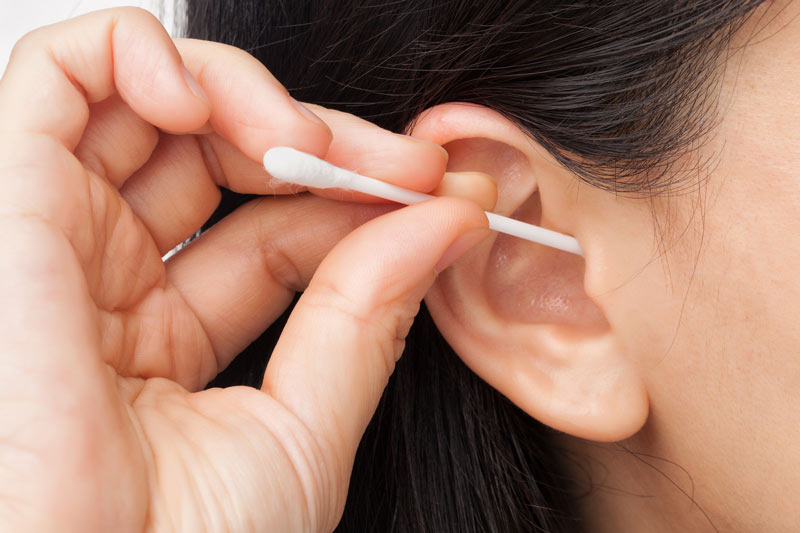Troubleshooting Your Hearing Aids
There are a number of things that can go wrong with your hearing aids that are easy to fix. Knowing how to ‘troubleshoot’ these problems will save you a lot of time and frustration.

My hearing aid is ‘dead’
- You could have a flat battery. Firstly change the battery. If your hearing aid still isn’t working, try another battery and check the use-by date on the packet. Also check you placed the battery in the correct way.
- The sound bore could be blocked with wax. Change the wax filter and clean out the sound bore.
- The tubing could be blocked with wax or moisture. If you have an air puffer, remove the ear mould from the end of the tubing. Inset the tip of the air puffer into the tubing and gently squeeze the bulb to blow any wax or moisture out of the tubing.
If your hearing aid still isn’t working, take it to your Hearing Clinic to be checked.

My hearing aid is whistling
The whistling sound you get from your hearing aid is generally caused from sound leaking out of the ear canal and being fed back into the hearing aid microphone. This can happen for a number of reasons.
- Feel with your fingers to see if the hearing aid is sitting properly in your ear and if the dome/earmould is pushed in far enough. Check you’ve put the correct hearing aid in your ear (red for right, blue for left).
- If you wear a hat this can rub across the microphone and make the hearing aid whistle. Holding the telephone too close to the microphone can also cause a whistling sound. Ask your clinician for tips on how to avoid this happening.
- If you have a BTE hearing aid check the tubing that carries the sound from the hearing aid to the earmould for any cracks or splits. This can cause feedback. If there are any breaks in the tubing, you’ll need to get the tubing replaced. This can be done over the counter at your Hearing Clinic.

- Earwax could be blocking your ear canal and causing the hearing aid to whistle. Get your ear canals checked for wax by your GP or clinician. If there’s too much wax it will need to be removed by a professional trained in this procedure.
- If your dome or earmould is not a good fit, sound can leak out, causing feedback. Your clinician can assess this for you. You may need a new/different style of earmould or have the vents reduced to stop the whistling in this case.
- If your hearing aid isn’t set properly, particularly in the high frequency sounds, whistling can occur. Your clinician may need to adjust this on your hearing aid to stop the feedback.
If the whistling sound is still happening after all this investigation, there may be an internal fault in your hearing aid. If that’s the case, then the aid will need to be sent away for repairs.
Next Article --> Storing and Insuring Your Hearing Aids
Previous Article --> Wax and Moisture Management
